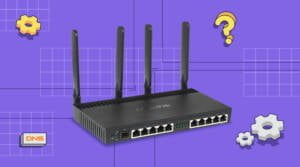When you connect your device to the Internet, your computer needs to know how to get the data to the right place. This is where the default gateway comes in. The default gateway is the IP address that your computer uses to send data to the Internet or other networks. When you send a request to open a website or send a message, your computer sends it to the default gateway, which then routes it in the right direction. The default gateway can be configured on your router or on your computer. If you are using a home network, your router is most likely the default gateway. Understanding how your default gateway works can help improve the performance of your network. If you notice that your network is getting slow, you can check your default gateway settings to make sure they are configured correctly. The default gateway can also be configured to allow or block access to certain sites or applications. Some organizations may use a default gateway to block access to social media or other unwanted sites. Overall, the default gateway plays an important role in your network and ensures efficient data delivery. Make sure you configure your default gateway correctly to get the best performance and security for your network. A default gateway is a network device that allows a computer or local network to connect to another network or the Internet. The default gateway acts as a kind of intermediary between the local network and the Internet.
When a computer tries to connect to the Internet, it makes a request to the default gateway to gain access to the external network. The default gateway acts as a forwarder and forwards the request to the ISP server.
The default gateway can be configured on any device that supports routing functionality, such as a router or switch. Typically, the default gateway is configured on the first device on the local network that has access to the Internet.
If there are multiple devices on a local network, they will all use the same default gateway to access the Internet. If the default gateway refuses to work, then computers on the local network will not be able to access the Internet.
The default gateway is very important for proper network operation and Internet access. Configuring the default gateway is one of the first tasks when setting up a network.
Examples of setting the default gateway on different devices
A default gateway is a network node that allows devices on a network to communicate with devices on other networks. Setting up a default gateway is necessary to connect to the Internet and to communicate with other networks.
Here are some examples of setting the default gateway on different devices:
- Windows: To set the default gateway in Windows, you need to open the 'Control Panel', select 'Network and Internet' and then 'Network and Sharing'. Then you need to select 'Change adapter settings' and find the network connection you are using. After this, you need to right-click on this connection and select 'Properties'. In the window that opens, select 'Internet Protocol Version 4 (TCP/IPv4)' and click on the 'Properties' button. In the TCP/IPv4 Protocol Properties window, select Use the following DNS server address and enter the IP address of your default gateway in the Default Gateway field.
- MacOS: To set the default gateway in MacOS, you need to open System Preferences, then select Network. Find the network connection you are using and select 'Advanced'. In the window that opens, you need to select the 'TCP/IP' tab and enter the IP address of your default gateway in the 'Router' field.
- Linux: To configure the default gateway in Linux, you need to open a terminal and enter the command 'sudo nano /etc/network/interfaces'. Find the network connection you are using and add the line 'gateway [your default gateway IP address]'. Then you need to save and close the file.
Setting up a default gateway may seem complicated, but it is an important step for connecting to the Internet and communicating with other networks. Therefore, it is necessary to pay attention to this issue and perform all the necessary settings correctly and accurately.
The Importance of Configuring the Default Gateway Correctly
The default gateway is a device that allows you to establish a connection between your computer and the Internet. It plays an important role in organizing the operation of a computer network, so it is necessary to configure it correctly.
If the default gateway settings are not set correctly, you may experience problems connecting to the Internet. The computer will be unable to access the network, which may cause delays and loss of performance.
Properly setting the default gateway can also improve network security. If the settings are set incorrectly, attackers can gain access to your network and steal important information.
Therefore, to avoid connection problems and ensure the security of your network, it is necessary to set up the default gateway correctly. If you are not confident in your knowledge, contact professionals who will help you set up the gateway correctly. When it comes to setting up a network, you need to pay attention to various details. One of these details is setting up the default gateway. If this setting is not done correctly, serious problems can occur.
First, setting the default gateway incorrectly can result in devices being unable to connect to the Internet. If a default gateway is not specified or an incorrect address is specified, the device will not be able to find a path to the Internet.
Secondly, incorrectly setting the default gateway can result in devices being unable to communicate with each other within the network. If a default gateway is not specified or an incorrect address is specified, devices will not be able to communicate with each other within the network, which may result in network failures.
Third, incorrectly setting the default gateway can lead to network security. If the default gateway is not specified correctly, attackers can gain access to the network and steal sensitive data.
As you can see, setting the default gateway is an important step when setting up a network. To avoid problems, you need to correctly specify the default gateway address and check that it is working.
How to protect yourself from possible threats?
A default gateway is a device that allows a connection between a local network and an external network, such as the Internet. It can also be used to protect the network from external threats. The default gateway can be configured to block certain types of traffic, filter malicious applications, and more.
However, just setting a default gateway does not guarantee complete network security. It is also important to use antivirus software, firewalls, and other security methods to ensure security.
Additionally, it is important to keep your software updated, avoid unsecured Wi-Fi networks, and use strong passwords to access the network. All of these measures can help protect your network from possible threats and keep your personal information safe.
Read further:






